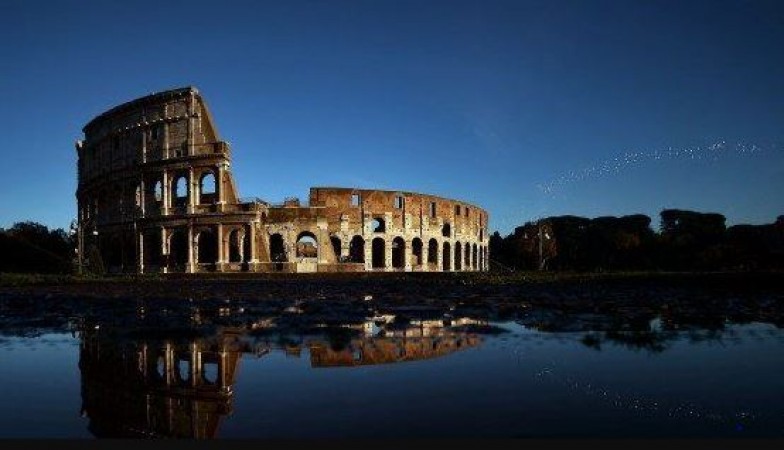
Introduction
Welcome to this fascinating exploration of one of Rome's most iconic structures - the Colosseum! In this article, we will delve into the rich history and captivating stories surrounding this ancient amphitheater. Did you know that the Colosseum in Rome was once filled with water to host naval battles? It's a remarkable fact that highlights the grandeur and ingenuity of the Roman Empire. Join us as we uncover the secrets and wonders of this architectural marvel.
The Colosseum in Rome: A Glimpse into History
The Colosseum, also known as the Flavian Amphitheatre, stands as a testament to the glory of ancient Rome. Built between 70 and 80 AD, this colossal structure was commissioned by Emperor Vespasian and completed by his successor, Titus. With its grandeur and immense size, the Colosseum was an architectural marvel of its time.
The Construction of the Colosseum
The construction of the Colosseum began in 70 AD on the site of an artificial lake belonging to Emperor Nero's extravagant Domus Aurea. The lake was drained, and the foundations were laid for the massive amphitheater. The Colosseum was primarily built using concrete and travertine stone, a popular building material in ancient Rome.
The Colosseum's Architectural Features
With its elliptical shape, the Colosseum measured approximately 189 meters long, 156 meters wide, and reached a height of 48 meters. It boasted a seating capacity of around 50,000 spectators, divided into various social classes. The seating arrangement was carefully designed to ensure smooth crowd management and optimal viewing angles.
The Colosseum in Rome was once filled with water to host naval battles.
One of the most fascinating aspects of the Colosseum's history is its transformation into a grand aquatic arena. Yes, you heard it right! The Colosseum in Rome was once filled with water to host naval battles. This awe-inspiring spectacle was made possible through a series of ingenious engineering marvels.
The Construction of the Subterranean Infrastructure
To create the aquatic stage, an intricate system of channels and tunnels was built beneath the Colosseum. These underground structures housed the elaborate machinery required to flood the arena with water. The network of tunnels, known as the hypogeum, was a labyrinthine masterpiece, allowing for the smooth flow of water and the movements of props, animals, and gladiators.
The Naval Battles: A Spectacle of Grandeur
When the Colosseum was flooded, it was transformed into a magnificent setting for naval battles, known as "Naumachiae." These elaborate displays featured scaled-down replicas of warships and reenactments of famous naval encounters. The battles were accompanied by dramatic music, sound effects, and the cheers of the spectators, creating an immersive experience that showcased the might and power of the Roman Empire.
The Engineering Marvel: Creating the Illusion
The engineering feat required to fill the Colosseum with water was nothing short of extraordinary. Aqueducts, such as the Aqua Claudia and Anio Novus, supplied the necessary water. A complex system of pumps and valves, powered by a sophisticated network of pulleys and cranes, ensured the controlled flow of water into the arena.
Exploring the Colosseum: From Gladiatorial Combat to Cultural Landmark
Beyond its aquatic spectacles, the Colosseum was primarily known for its gladiatorial contests, which were brutal displays of combat and entertainment. Gladiators, typically slaves or prisoners of war, battled one another or wild animals in front of an enthralled audience. These spectacles were both a reflection of the Roman values of courage and discipline and a means of maintaining control over the population.
The Amphitheater: A Hub of Social Activity
The Colosseum was not merely a place for violent spectacles. It was a hub of social activity where people from all walks of life gathered to witness thrilling events, engage in political discussions, and indulge in the pleasures of food and drink. The seating arrangement in the Colosseum reflected the social hierarchy of ancient Rome, with the emperor and the elite occupying the best seats, while the common citizens and women were seated in the upper tiers.
The Colosseum's Cultural Significance
Over the centuries, the Colosseum has become a symbol of Rome's rich cultural heritage and a testament to the ingenuity of ancient engineering. Today, it stands as one of the most visited landmarks in the world, attracting millions of tourists who marvel at its grandeur and immerse themselves in its captivating history.
Conclusion
The Colosseum in Rome continues to captivate and inspire people from all corners of the world. Its sheer size, architectural beauty, and intriguing history make it a must-visit destination for history enthusiasts and travelers alike. From its origins as a flooded arena hosting naval battles to its role as a cultural landmark, the Colosseum stands as a testament to the grandeur and legacy of ancient Rome. So, immerse yourself in the splendor of the Colosseum and witness firsthand the wonders of this magnificent ancient structure.
Discovering the Top 10 Museums and Galleries around the Globe
France : Famous Travel Destination
Monuments in India: These beautiful buildings in India are the gift of the Mughals